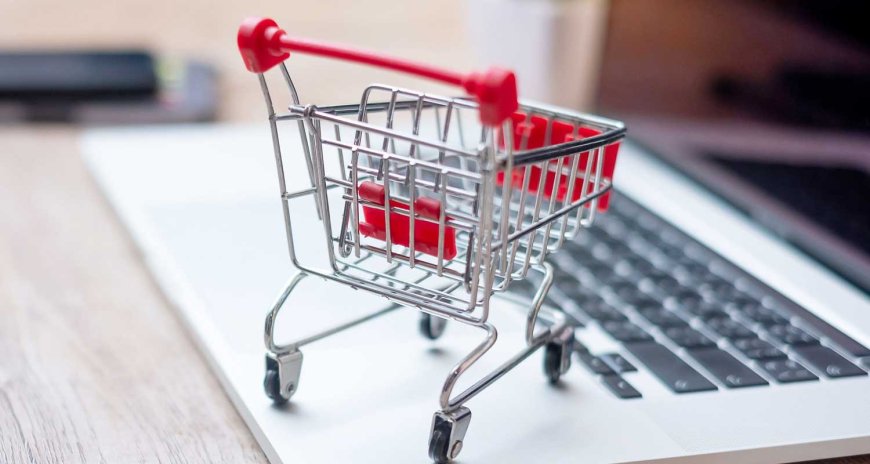The Future of Shopping: Exploring the Top Trending Retail Technologies in 2025
The Future of Shopping: Exploring the Top Trending Retail Technologies in 2025

In recent years, the retail industry has undergone a seismic shift, driven by rapid technological advancements and changing consumer expectations. As we stride into 2025, the landscape is more innovative and dynamic than ever before. Retailers are leveraging cutting-edge technologies to enhance customer experiences, streamline operations, and stay competitive in an increasingly digital world. Here, we take a deep dive into the most trending retail technologies that are shaping the future of shopping.
1. Artificial Intelligence (AI) and Machine Learning (ML)
AI and ML continue to be at the forefront of retail innovation. Retailers are utilizing these technologies to personalize shopping experiences, optimize inventory management, and improve customer service.
Personalization and Customer Insights
AI algorithms analyze vast amounts of data—purchase history, browsing behavior, and social media activity—to deliver tailored product recommendations. Major brands like Amazon and Walmart are using AI-driven personalization engines to increase sales and foster loyalty. For example, AI can suggest products that align with individual preferences, creating a more engaging and relevant shopping journey.
Chatbots and Virtual Assistants
AI-powered chatbots are now handling customer inquiries 24/7, providing instant support and guiding users through product selections. Virtual assistants like Google Assistant and Amazon Alexa facilitate voice-activated shopping, allowing consumers to place orders hands-free, which is especially popular among busy professionals and tech-savvy users.
Inventory and Supply Chain Optimization
ML models predict demand fluctuations and optimize stock levels, reducing waste and preventing stockouts. Enhanced forecast accuracy ensures shelves are stocked with in-demand products, improving profitability and customer satisfaction.
2. Augmented Reality (AR) and Virtual Reality (VR)
AR and VR technologies are transforming the way customers experience products before making a purchase, particularly in categories like fashion, furniture, and cosmetics.
Virtual Try-Ons
Brands like Sephora and Warby Parker use AR to let customers virtually try on makeup or glasses using their smartphones or in-store screens. This immersive experience reduces hesitation and increases purchase confidence.
Virtual Showrooms
Furniture retailers such as IKEA and Wayfair employ AR and VR to create virtual showrooms, allowing customers to visualize how furniture would look in their own homes. This not only boosts engagement but also minimizes returns caused by mismatched expectations.
Interactive Shopping Experiences
AR-enabled apps enhance in-store shopping by overlaying product information, reviews, or styling suggestions directly onto physical items, making shopping more interactive and informative.
3. Contactless Payments and Digital Wallets
The COVID-19 pandemic accelerated the adoption of contactless payments, a trend that has continued to grow in 2025.
Mobile Payments
Digital wallets like Apple Pay, Google Pay, and Samsung Pay allow seamless and secure transactions via smartphones. Unlike traditional card payments, contactless options reduce checkout times and enhance hygiene, which remains a significant concern for many consumers.
Wearable Payments
Smartwatches and fitness bands equipped with payment capabilities offer another layer of convenience, enabling shoppers to pay with a simple wrist gesture, especially at quick-service restaurants and transit systems.
NFC and QR Code Payments
Near Field Communication (NFC) technology and QR codes are increasingly integrated into retail POS systems, allowing customers to pay without cash or physical cards, streamlining checkout lines and improving overall customer experience.
4. Robotics and Automation
Automation is revolutionizing store operations behind the scenes and on the shop floor.
Autonomous Checkout
Grocery chains like Alibaba’s Hema stores and Amazon Go deploy checkout-free systems where shoppers simply pick products and leave, with sensors and cameras automatically charging their accounts. This frictionless shopping model reduces wait times and staffing costs.
In-Store Robots
Robots assist with inventory management, shelf stocking, and customer assistance. For example, Tally, an autonomous shelf-scanning robot, identifies out-of-stock or misplaced items, enabling faster restocking and better inventory accuracy.
Automated Warehousing
Robotics like Kiva Systems (now Amazon Robotics) streamline fulfillment centers by automating picking and packing tasks, significantly increasing processing speed and reducing operational costs.
5. Big Data Analytics
Retailers are harnessing the power of big data to gain actionable insights and make data-driven decisions.
Customer Behavior Analysis
Analyzing vast datasets helps retailers understand shopping patterns, segment customers, and tailor marketing campaigns accordingly. Hyper-personalized marketing increases engagement and conversions.
Dynamic Pricing
Real-time data on competitor pricing, demand, and inventory levels enable retailers to implement dynamic pricing strategies that optimize profit margins and competitiveness.
Supply Chain Optimization
Big data analytics facilitate end-to-end supply chain visibility, allowing for proactive issue resolution and efficiency improvements, which are crucial in a volatile global market.
6. Internet of Things (IoT)
The IoT ecosystem connects physical devices and sensors to enhance retail operations.
Connected Shelves
Smart shelves monitor inventory levels in real time, alerting staff to restock or reorder items automatically, thus minimizing shortages.
Smart Fitting Rooms
Some retailers feature smart fitting rooms equipped with screens that suggest accessories or alternate sizes based on the item being tried so that the shopping experience is more personalized.
Supply Chain Tracking
IoT sensors track shipments in real time, providing transparency from warehouse to delivery, and allowing retailers to anticipate delays and optimize logistics.
7. Blockchain and Cryptocurrency
Blockchain technology underpins transparent and secure transactions, and cryptocurrency payments are gaining traction.
Supply Chain Transparency
Blockchain provides an immutable record of product provenance, ensuring authenticity and ethical sourcing. This builds trust, especially in luxury and organic sectors.
Cryptocurrency Payments
Retailers like Overstock and Newegg now accept cryptocurrencies, appealing to digital-native consumers and offering faster, borderless transactions. While still emerging, this trend hints at a future where digital currencies could become mainstream in retail.
8. Sustainable and Ethical Retail Technologies
With consumers increasingly valuing sustainability, retail tech is also focusing on eco-friendly innovations.
Energy-efficient Systems
Smart lighting and HVAC systems optimize energy consumption in stores, reducing carbon footprint and operational costs.
Digital Receipts and Paperless Transactions
Digital receipts and mobile ordering cut down on paper waste, aligning with green initiatives and consumer demand for eco consciousness.

 Francis
Francis 





